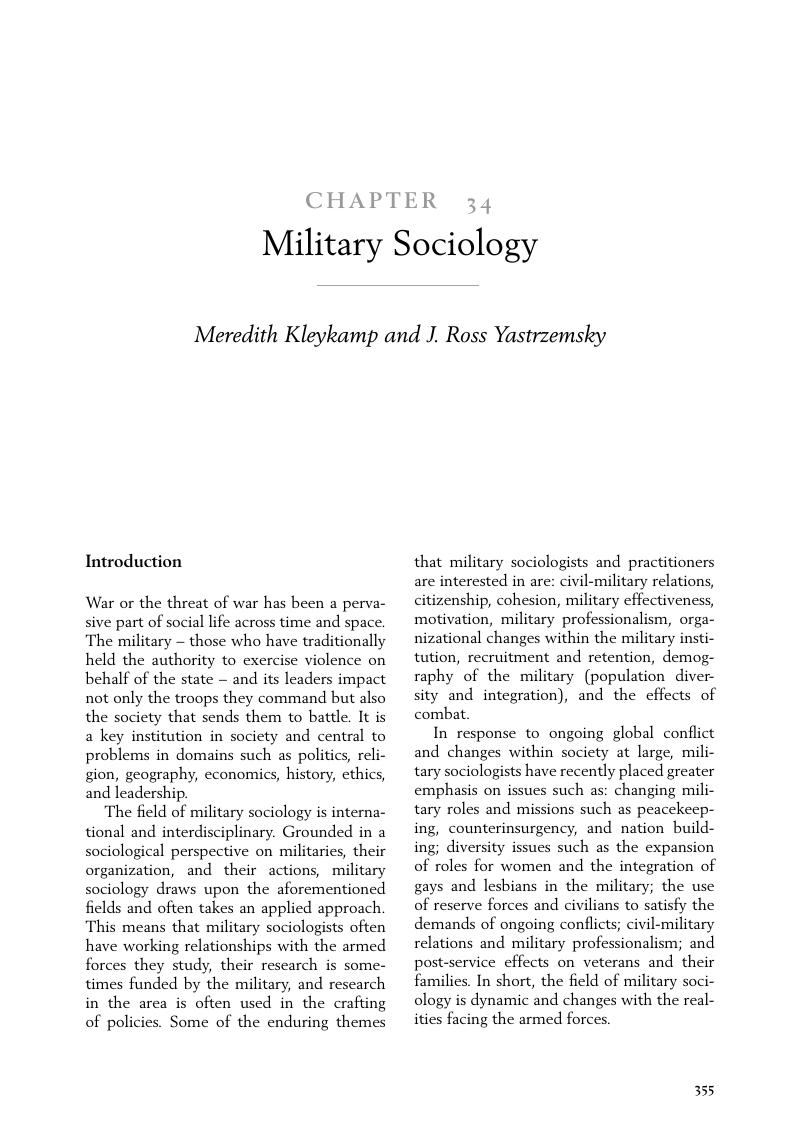Book contents
- The Cambridge Handbook of Sociology
- The Cambridge Handbook of Sociology
- Copyright page
- Contents
- Figures
- Tables
- Contributors
- Introduction
- Part I The Development of Sociology
- Part II Sociological Theory
- Part III Sociological Research Methods
- Part IV Culture and Socialization
- Part V Social Structure and the Organization of Society
- Part VI Social Inequality and Diversity
- Part VII Social Institutions
- Chapter 28 The Sociology of Families
- Chapter 29 Sociology of Religion
- Chapter 30 Political Sociology: A Broad and “Poly-centric” Field
- Chapter 31 Sociology of Education
- Chapter 32 Economic Sociology
- Chapter 33 Medical Sociology
- Chapter 34 Military Sociology
- Chapter 35 Sociology of Sport
- Part VIII Social Problems and Deviant Behavior
- Part IX Locality, Geography, and the Environment
- Part X Social Change
- Index
- References
Chapter 34 - Military Sociology
from Part VII - Social Institutions
Published online by Cambridge University Press: 21 September 2017
- The Cambridge Handbook of Sociology
- The Cambridge Handbook of Sociology
- Copyright page
- Contents
- Figures
- Tables
- Contributors
- Introduction
- Part I The Development of Sociology
- Part II Sociological Theory
- Part III Sociological Research Methods
- Part IV Culture and Socialization
- Part V Social Structure and the Organization of Society
- Part VI Social Inequality and Diversity
- Part VII Social Institutions
- Chapter 28 The Sociology of Families
- Chapter 29 Sociology of Religion
- Chapter 30 Political Sociology: A Broad and “Poly-centric” Field
- Chapter 31 Sociology of Education
- Chapter 32 Economic Sociology
- Chapter 33 Medical Sociology
- Chapter 34 Military Sociology
- Chapter 35 Sociology of Sport
- Part VIII Social Problems and Deviant Behavior
- Part IX Locality, Geography, and the Environment
- Part X Social Change
- Index
- References
Summary

- Type
- Chapter
- Information
- The Cambridge Handbook of SociologyCore Areas in Sociology and the Development of the Discipline, pp. 344 - 354Publisher: Cambridge University PressPrint publication year: 2017

